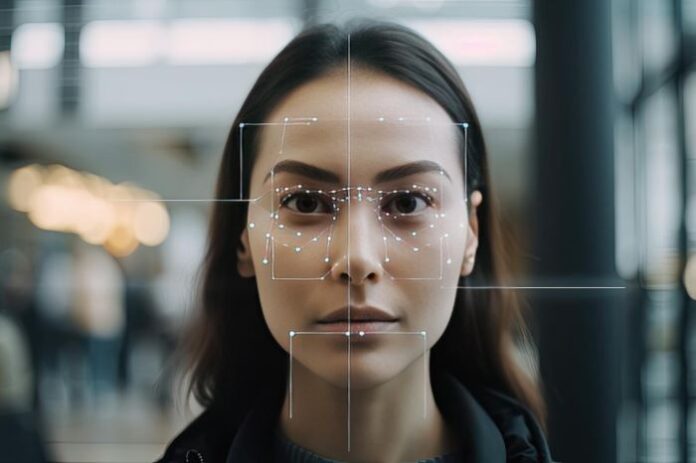What Are Face Datasets?
Image datasets contain digital images specifically designed to help train, test, and evaluate computer vision algorithms. Face datasets are a type of image dataset with face images curated for machine learning projects. They can be used to train ML models for diverse use cases including face recognition, face detection, and automated cropping.
Instead of collecting your own training data, you can use one of several publicly available face datasets. Managing and optimizing machine learning datasets is one of the key steps in the machine learning operations (MLOps) pipeline.
Face datasets contain faces in different locations and lighting conditions that represent human emotions, ethnicity, age, and other characteristics. Facial data sets are the key building blocks of face recognition technology. There are many use cases in this field of computer vision, including video surveillance, device security, and augmented reality (AR).
Top 3 Face Datasets
CelebA
The CelebFaces Attributes Dataset (CelebA) is a large face attribute dataset containing over 200,000 celebrity images with 40 attribute annotations each. The images in this dataset cover many pose variations and background clutter.
This dataset can be used as a training and test set for computer vision tasks such as face recognition attribute, face detection, landmark ( face part) localization, and face editing and compositing.
The dataset has 200K images, with 10,177 human identities, five landmark locations per image, and 40 binary attribute annotations.
Flickr-Faces-HQ Dataset (FFHQ)
The Flickr-Faces-HQ data set (FFHQ) is a dataset consisting of human faces that vary in age, ethnicity, image background, and accessories such as glasses, sunglasses, and hats – more so than the CELEBA-HQ data set. It was prepared by pulling images from Flickr, automatically aligning and cropping them.
This data set was originally intended to be a benchmark for generative adversarial networks (GANs). The data set includes 70,000 high-quality images in PNG format with 1024×1024 resolution.
Facial Expression Comparison (FEC Google)
This dataset from Google is a large dataset of facial expressions that consists of facial image triples and human annotations specifying whether the two faces in each triplet form the most similar pair in terms of expression.
This dataset is designed to help researchers study topics related to facial expression analysis, such as image retrieval and photo album summarization based on facial expressions, emotion classification, and facial expression synthesis.
The data set is 200 MB in size and contains 500K triples and 156K face images.
Tutorial: VAE with the CelebA Dataset Using Tensorflow
Using Variational Autoencoder (VAE) in TensorFlow to generate new face images is a multi-step process that involves the following steps:
Prerequisites
You will need to have TensorFlow and its dependencies installed, as well as the CelebA dataset. Additionally, you may want to use a GPU to speed up the training process.
Step 1: Loading the Dataset
You can use the TensorFlow Datasets library to load the CelebA dataset. Once loaded, you will need to preprocess the data by normalizing the pixel values and reshaping the images to the desired size.
To load the CelebA dataset and preprocess the data:
(train_ds, test_ds), ds_info = tfds.load(
“celeb_a”,
split=[“train[:80%]”, “train[80%:90%]”],
as_supervised=True,
with_info=True,
download=True,
)
def preprocess(image):
image = tf.image.resize(image, (64, 64))
image = (image / 127.5) – 1
return image, label
Step 2: Defining the Prior Distribution
VAE uses a prior distribution to model the latent space. For this example, you can use a standard normal distribution with a mean of 0 and a standard deviation of 1. To define the prior distribution:
prior = tf.distributions.Normal(loc=0., scale=1.)
Step 3: Defining the Encoder
The encoder network is responsible for mapping the input data to the latent space. You can use a convolutional neural network (CNN) with a few layers of convolutional and pooling layers, followed by a dense layer that outputs the mean and standard deviation of the latent distribution. To use Kullback–Leibler (KL) divergence to define the encoder:
- Define the encoder network:
encoder_inputs = layers.Input(shape=(64, 64, 3))
x = layers.Conv2D(32, 3, strides=2, activation=”relu”)(encoder_inputs)
x = layers.Conv2D(64, 3, strides=2, activation=”relu”)(x)
x = layers.Flatten()(x)
x = layers.Dense(64, activation=”relu”)(x)
- Compute the mean and log_var of the latent distribution:
z_mean = layers.Dense(latent_dim)(x)
z_log_var = layers.Dense(latent_dim)(x)
- Sample from the latent distribution:
def sampling(args):
z_mean, z_log_var = args
epsilon = tf.random.normal(shape=tf.shape(z_mean))
return z_mean + tf.exp(0.5 * z_log_var) * epsilon
z = layers.Lambda(sampling)([z_mean, z_log_var])
encoder = layers.Model(encoder_inputs, [z_mean, z_log_var, z], name=”encoder”)
- Compute the KL divergence:
kl_loss = -0.5 * tf.reduce_sum(1 + z_log_var – tf.square(z_mean) – tf.exp(z_log_var), axis=-1)
Step 4: Defining the Decoder
The decoder network is responsible for mapping the latent representation back to the original data space. You can use a transposed convolutional neural network (Conv2DTranspose) with a few layers of transposed convolutional layers and upsampling layers.
Here’s an example of how you could define the decoder network to return an IndependentBernoulli distribution in TensorFlow:
- Define the decoder network:
latent_inputs = layers.Input(shape=(latent_dim,))
x = layers.Dense(7*7*64, activation=”relu”)(latent_inputs)
x = layers.Reshape((7, 7, 64))(x)
x = layers.Conv2DTranspose(64, 3, strides=2, padding=”same”, activation=”relu”)(x)
x = layers.Conv2DTranspose(32, 3, strides=2, padding=”same”, activation=”relu”)(x)
x = layers.Conv2DTranspose(1, 3, strides=1, padding=”same”, activation=”sigmoid”)(x)
decoder = layers.Model(latent_inputs, x, name=”decoder”)
- Define the IndependentBernoulli distribution:
def independent_bernoulli(x):
return tfd.Independent(tfd.Bernoulli(probs=x), reinterpreted_batch_ndims=3)
- Define the decoder network with IndependentBernoulli distribution:
likelihood = independent_bernoulli(decoder(z))
Step 5: Connecting the Encoder with the Decoder
Once you have defined the encoder and decoder networks, you can connect them to create the full VAE model. In TensorFlow, you can use the functional API to connect the encoder and decoder networks.
Here’s an example of how you could connect the encoder and decoder networks to create a VAE model:
- Connect the encoder and decoder:
encoder_outputs = encoder(encoder_inputs)
z = encoder_outputs[-1]
likelihood = independent_bernoulli(decoder(z))
- Define the VAE model:
vae = tf.keras.Model(encoder_inputs, likelihood)
Step 6: Compiling the VAE Model
You will need to compile the model by specifying the optimizer and the loss function. For VAE, the loss function is typically the sum of the reconstruction loss and the KL divergence between the latent distribution and the prior distribution.
Here’s an example of how you could compile the VAE model, assuming the KL divergence is stored in the variable kl_loss:
reconstruction_loss = -tf.reduce_sum(likelihood.log_prob(encoder_inputs))
vae_loss = reconstruction_loss + kl_loss
vae.compile(optimizer=tf.optimizers.Adam(), loss=vae_loss, metrics=[reconstruction_loss, kl_loss])
Step 7: Reconstructing the Test Images
You can use the trained VAE model to reconstruct test images by passing them through the encoder and decoder. Here’s an example of how you could use the trained VAE model to reconstruct new test images:
- Reconstruct new images:
new_images = test_ds.take(1)
encoded_images, _, _ = encoder(new_images)
reconstructed_images = decoder(encoded_images)
- Compare the original and reconstructed images:
for orig, recon in zip(new_images, reconstructed_images):
# display original and reconstructed images
Step 8: Generating New Images
Finally, you can use the trained VAE model to generate new images by sampling from the prior distribution and passing the sample through the decoder. For example:
# Generate new images
sample = prior.sample(10)
generated_images = decoder(sample)
# Display the generated images
for img in generated_images:
# display the generated image
Step 9: Adding Attributes to Face Images
Here’s a general overview of how to add new attributes to face images using a VAE:
First, you’ll need to create a dataset that includes images with the desired attributes. This can be done by manually annotating a dataset with the desired attributes, or by using an existing dataset that already includes the desired attributes.
Next, you’ll need to train a VAE on the dataset with the desired attributes. This will involve defining the architecture of the VAE as described in the previous answer and training the model on the dataset.
Once the VAE is trained, you can use it to generate new images with the desired attributes. One way to do this is to use the encoder to encode an existing image and then use the decoder to generate a new image with the desired attributes. Another way is to sample latent vectors from a Gaussian distribution, and then use the decoder to generate new images with the desired attributes.
Conclusion
In conclusion, face recognition technology is widely used in various applications such as security, biometrics, and entertainment. To train and evaluate facial recognition algorithms, a good quality and diverse face dataset is essential. The LFW (Labeled Faces in the Wild) dataset and the YTF (YouTube Faces) dataset are two popular datasets that have been widely used in the field of facial recognition.
Additionally, Variational Autoencoder (VAE) is a powerful generative model that can be used to generate new face images for face recognition using a dataset like CelebA. In this article, we provided an overview of how to train a VAE on the CelebA dataset in TensorFlow and how to use the trained VAE to reconstruct and generate new images.










